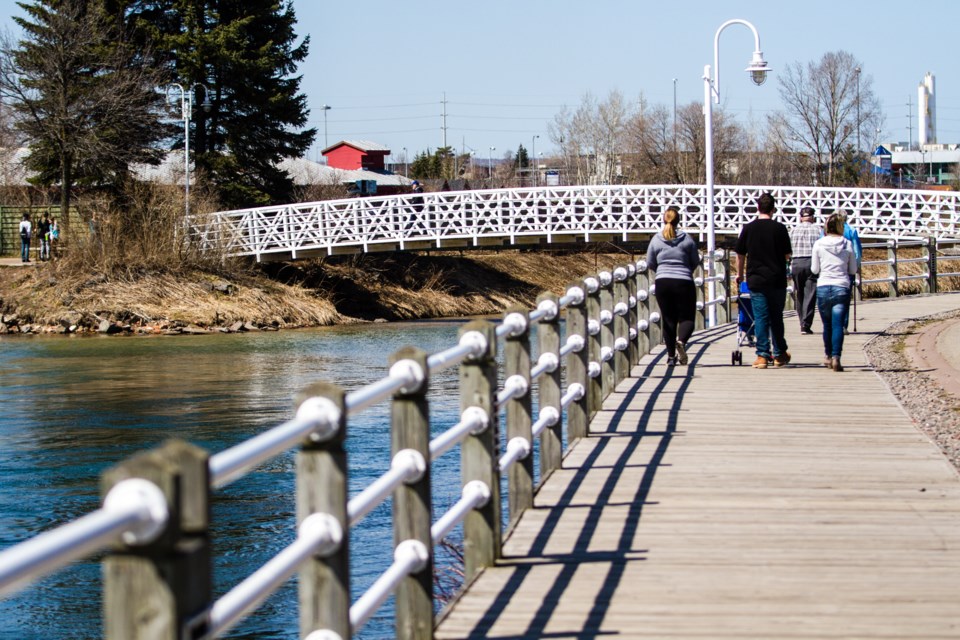The St. Mary’s River Drive Boardwalk is a popular spot for residents and visitors to take some time out and soak in what could be the best view the city has to offer.
This is especially true during the summer of COVID, where getting out for a relaxing walk becomes an important psychological outlet for those cooped up inside most of the day.
In a few weeks, walkers will notice that portions of the trail will be undergoing needed repairs and maintenance.
At its last meeting city council awarded a $741,795 boardwalk remediation contract to Avery Construction. When non-recoverable HST and an allowance for engineering is added, the city’s cost to complete the boardwalk remediation project is projected to be $920,100. That’s below the 2020 capital budget of $1.5 million for this project.
This is the first phase of repairing the walk from the effects of erosion. A new tender will be awarded next year for phase two. This year’s work is scheduled to be completed in October.
Carl Rumiel, Sault Ste. Marie’s manager of design and transportation engineering, admits it’s a late start compared to most construction projects, but adds it could be a blessing.
“You’ll get the scope of the work done before the winter shutdown. It’s given the public more time to use it through the summer months,” said Rumiel.
People will still be able to enjoy the walk while the work is being done. Some sections will be fenced off and the public will be directed around the construction. “The idea is to get around the construction and back on the trail as soon as possible,” said Rumiel.
A report to council says the project includes construction of scour protection along the St. Mary’s River waterfront from the viewing platform east of the Clergue Generating station to the Fort Creek Bridge and the construction of approximately 260 meters of concrete break wall on the landward side of the walkway including all landscape restoration and new street lighting along St. Mary’s River Drive.
Next year’s phase two goes all the way to the Delta Hotel.
Recent higher than average water levels have contributed to erosion of the shoreline. It’s been watched closely by private and public property owners along the Great Lakes.
Sinkholes have appeared along the walkway and the engineering department determined shoreline protection was required to ensure the long-term stability of the boardwalk.
The water level situation may not be going away any time soon according to a recent report by the Joint International Lake Superior Board of Control.
“Basin conditions were generally near average or drier than average in June, around both Lake Superior and Lake Michigan-Huron. As a result, water levels did not rise as much as they typically do in June.
Nonetheless, water levels are expected to remain high over at least the next few months and further record-highs are possible if wet conditions return. Furthermore, there will continue to be a significantly increased risk of shoreline erosion, lakeshore flooding and coastal damages as high water levels persist,” the board reported recently.
“The International Lake Superior Board of Control (Board) advises all those that may be affected to prepare for potentially severe coastal impacts, especially during periods of strong winds and high waves.
Lake Superior rose 5 cm over the course of the month, while on average the water level rises 8 cm in June. At the beginning of July, Lake Superior is 13 cm below the record-high beginning-of-month level set last year in 2019. The level is currently 23 cm above average (1918 – 2019)”
